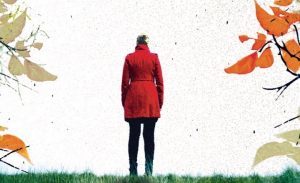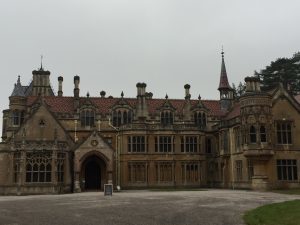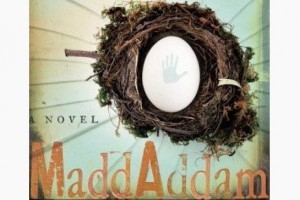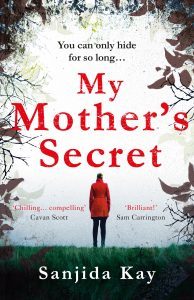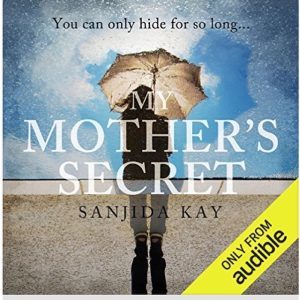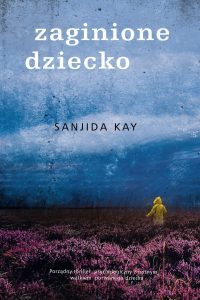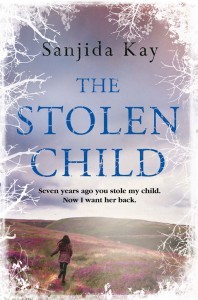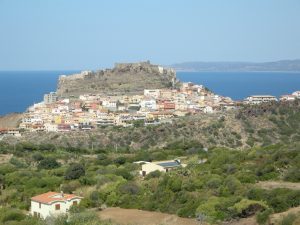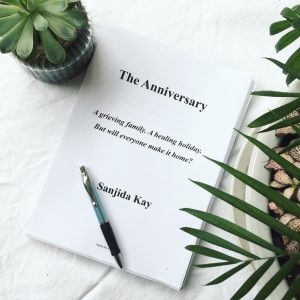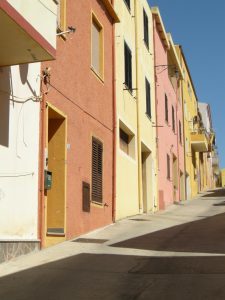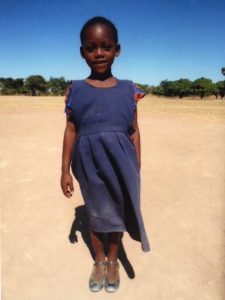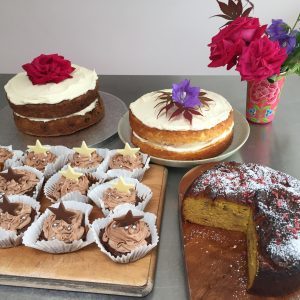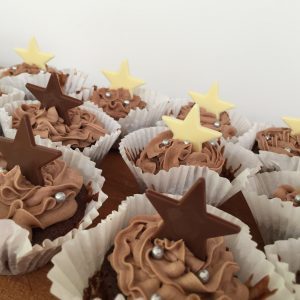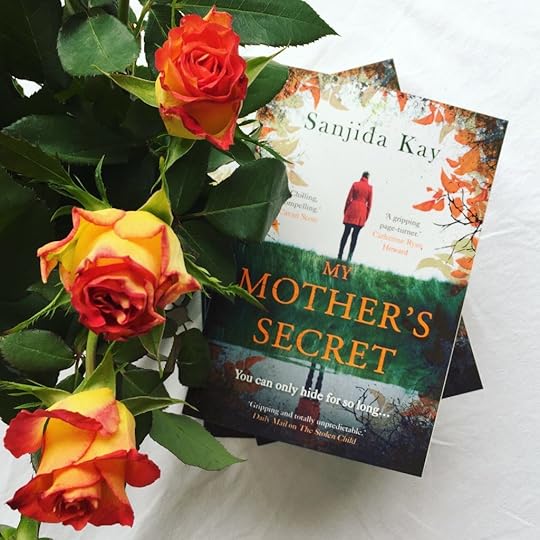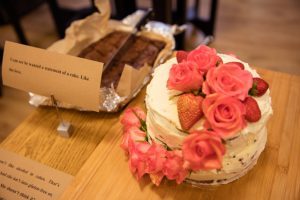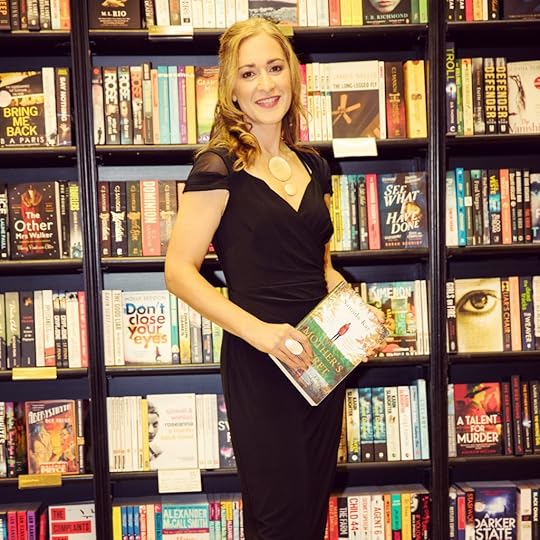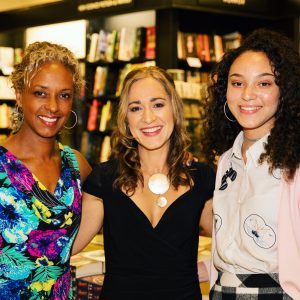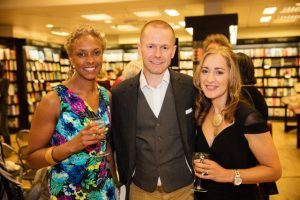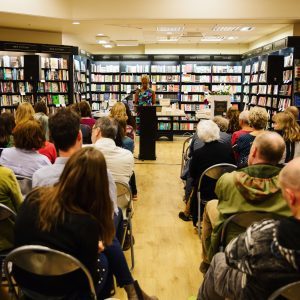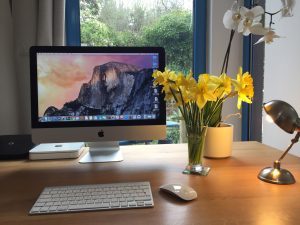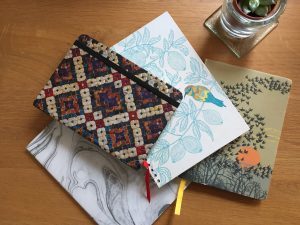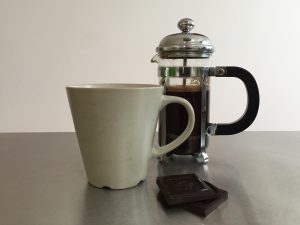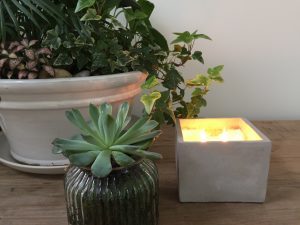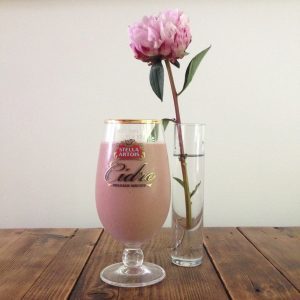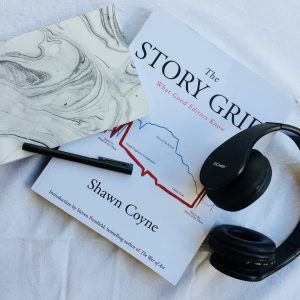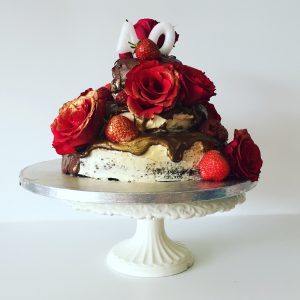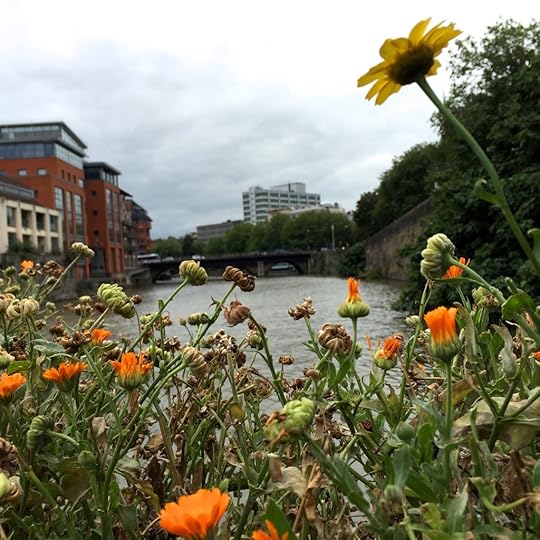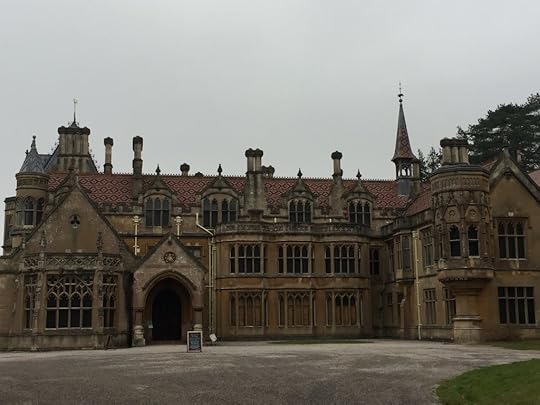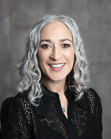Sanjida Kay's Blog, page 8
September 16, 2018
Stories within stories: The books mentioned in My Mother’s Secret
I’m delighted to welcome Tasha Locke to my blog this week. Tasha graduated from Bristol University this year with a degree in English Literature. I met Tasha through my role as a Role Literary Fund Fellow at Bristol University. Her insight into literature prompted me to ask her if she’d write the Book Club questions (My Mother’s Secret Book Club Questions) for you. There are a number of novels mentioned in My Mother’s Secret, mostly by one of the main characters, bookish teenager, Stella Taylor, who is in a Book Club at school. Stella is obsessed with Jane Eyre, but it’s Henry James’ The Golden Bowl that runs like a leitmotif through my thriller… Over to Tasha.
The novels mentioned in My Mother’s Secret provide layers for both the characters and the plot. These novels all present love in an unconventional, often forbidden, light. The debates on these novels in Stella’s book club get us to think about the complexities and themes of My Mother’s Secret.
Introducing the theme of adultery to My Mother’s Secret, Stella’s book club first read The Golden Bowl by Henry James. The group can’t agree whether the book is about love, sex, or betrayal. Their book club debate invites us to reconsider our own opinions about betrayal and deception in relationships, which becomes increasingly important as the story of My Mother’s Secret goes on.
The bowl from The Golden Bowl is also symbolic in My Mother’s Secret. In James’ novel Maggie Verver is about to get married and is gifted a golden bowl by her best friend and fiancé (who happen to be lovers) that has a crack in it. The symbolic crack in James’ The Golden Bowl mirrors the secret in My Mother’s Secret – but not just Emma Taylor’s, the mother and main character in the novel. It is not until the final twist of My Mother’s Secret that we realise the significance of Stella’s earlier statement: ‘the only person I know who’s read it is my dad.’
Another novel mentioned in My Mother’s Secret is Jane Eyre. My Mother’s Secret opens with a quote from Jane Eyre and Bronte’s gothic setting of Thornfield Hall resembles Tyntesfield, the estate outside of Bristol, where parts of My Mother’s Secret are set. Tyntesfield, like Bronte’s Thornfield, becomes a place of secrecy, deceit and even ghost-like doubles.
Jane Eyre is Stella’s favourite book. She moulds herself on Jane, and, appropriately, her Instagram name is Mrs Rochester. Stella’s desire to find out what her mother’s secret is frames her narrative in a Jane Eyre-esque Bildungsroman, and the secret, like the character of Bertha in Jane Eyre, becomes the threat to her teenage romance.
Stella’s teenage crush Adam – MaddAddam on Instagram – builds an unlikely connection between Jane Eyre and Margret Atwood’s novel Oryx and Crake. Whilst placing teenage love on social media is fitting, Atwood’s post-apocalyptic dystopia seems worlds away from Bronte’s 19th century England. But the twist in Stella and Adam’s love story – the reason their love must remain forbidden – draws these two novels together.
My Mother’s Secret invites a re-reading of one of Jane Eyre’s most famous lines, which Stella quotes:
No woman was ever nearer to her mate than I am: ever more absolutely bone of his bone and flesh of his flesh.
Stella will regret wanting love like that… like Adam says of Atwood’s ‘speculative fiction’: ‘it means that everything could happen right now’.
Stella’s book club, and the books they read, provide a platform for the reader to speculate on the relationships in My Mother’s Secret. But the constant twists prove that these books cannot be relied on; the complexities of love in My Mother’s Secret is utterly new.
September 9, 2018
Cover reveal for My Mother’s Secret in paperback!
I love the new cover for the paperback of My Mother’s Secret. It’s not radically different – apart from Sam Carrington says, ‘Brilliant!’ on the front cover – but the colours are really eye-catching.
It’s out 4 October. The audio version is here already, if you feel like giving that a spin!
And in other news, The Stolen Child, will be published in Poland in autumn, with a gorgeously atmospheric cover.
July 22, 2018
Wuthering Heights – the novel that has influenced me the most
When I was a teenager, I steadfastly refused to believe that so-called ‘classical literature’ could be better than the assortment I chose from the local library. What did these authors have to tell me? By this time in my life I had lived in several countries, attended eight out of what would be ten schools and knew no one else who was mixed-race. I feared so-called classics would be dull, staid and part of ‘the establishment’ that I was so busy rebelling against.
And then I read Wuthering Heights by Emily Brontë. Brontë’s tale, set on Haworth’s bleak and beautiful moorland resonated with me, partly because I spent my teens living on either side of Ilkley Moor.
As a sixteen-year-old, I understood Cathy’s passion:
‘He’s more myself than I am. Whatever our souls are made of, his and mine are the same.’
I was shocked by the power and the savageness of some scenes: the one in which Lockwood grabs a child’s wrists and saws them across broken glass still haunts me. But most of all, what struck me was how easy to read this story was: it is a gripping, page-turner; the writing is beautiful and profound; there is something about this multi-generational tale of love and loss that moved me then, and moves me still. As a teenager, I thought it spoke directly to me: do you choose the person who rocks your world but is ultimately unstable, or the one who is boring but steadfast and will give you security?
Now, or course, I see more layers and nuances in Brontë’s novel. My fiction has always been gothic with an almost super natural element running through it. I’ve read, and re-read Wuthering Heights, and in my second psychological thriller, The Stolen Child, I turned back to the Yorkshire moors as the setting for a kind of demonic love story. It was a great excuse to re-read Wuthering Heights.
For more on Wuthering Heights, I’ve recorded two podcasts for the Royal Literary Fund. Here’s the first one:
July 15, 2018
One Year Later
As My Mother’s Secret has been wending its way into the world, I’ve been working on another psychological thriller. It’s called One Year Later…
One year ago, the Flowers family gathered at The Pines, a rambling farmhouse in Somerset, to celebrate the youngest child’s third birthday. Tragically, the day before her birthday, Ruby-May drowned in the garden pond while her grandfather, David Flowers, was meant to be looking after her.
One year later, Ruby-May’s anniversary is fast approaching. The three Flowers siblings, Nick, Bethany, and Amy, who is Ruby-May’s mother, decide to hold the anniversary of the child’s death on a remote island off the coast of Italy. They’ve barely spoken to each other for a year, and none of them have seen their father, David, since the funeral. This is their chance to heal and come together as a family before it’s too late.
But as the extended family, including partners, children and hangers-on, gather in what appears to be an idyllic location, a rural farmhouse next to a stunningly beautiful beach, David shows up, still refusing to admit he was culpable. As the tension escalates, buried secrets will be uncovered…and not everyone may make it home…
Originally called The Anniversary, the novel is book-ended by scenes in Bristol and Somerset, where I live, but most of the action takes place on a tiny island off the coast of Italy. Sadly, I didn’t manage a research trip, as my husband pointed out I’ve been to Italy more than enough times to satisfy most normal people, and I should just do what writers are meant to – use my imagination. Fortunately, the weather this summer is breathtakingly-hot, which helps, although I would much rather be on a beach than at my desk.
One Year Later will literally be out one year later…August 2019. Just in time for your summer holiday.
July 8, 2018
Just Giving – Writing Desks
We are lucky to have been born into a time and a place where we have food, shelter, water and a decent education. Not everyone has these rights. My daughter and I are sponsoring a little girl called Mavellous who is eight-years-old.
Mavellous lives in Zambia and is the youngest of eight children. Every morning she has to walk five miles a day to fetch clean water. There are 100 children in her class and she has to share a desk with seven other children. We asked Action Aid what Mavellous’s school needed most and they said writing desks: forty of them at £30 each.
Since, as you’ve probably gathered, we like baking, my daughter and I have started pop-up cake sales to raise the money to buy writing desks. I’m sorry we can’t share our cakes with you (although maybe if you head over to the south-west…!) but if you’d like to contribute, or simply cheer us along, here’s our Just Giving page.
July 1, 2018
My Mother’s Secret is out as an Audio-book!
I’m delighted that My Mother’s Secret is out as an audiobook, published by Audible and narrated by Lucy Paterson. It’s available here.
To celebrate, I’m giving away five free copies. Please sign up for my newsletter between now and July 8th, and the five winners will be chosen at random.
Good luck!
June 29, 2018
Launch party for My Mother’s Secret!
It’s hard to believe, for me at least, but after doing little else but think about the characters in My Mother’s Secret for a year and a half, my novel is out in the real world! We had a fantastic launch party at Waterstones, Bristol, with locally-brewed beer and locally-bought prosecco, and squidgy cakes inspired by the ones baked by my protagonist, Emma Taylor.
My wonderful friend and talented voice-over artist and presenter, Gillian Burke, read the part of Emma Taylor, and rising star, Abbi Bayliss, read the part of her daughter, Stella. I put my Northern accent to good use and read Lizzie Bradshaw’s section, which is quite dark. I hope I haven’t scared my daughter for life.
Big thanks to my lovely husband, Jaimie Rogers, my publicist, Kirsty Doole, and sister, Emma O’Connell, who kept the show on the road!
June 24, 2018
My Writing Toolkit
Book blogger and health journalist, Victoria Goldman, asked me to tell her what my essential writing toolkit is for her blog, Off-the-Shelf Books. Here goes:
Office
Our exciting news is that we’re renovating a house in rural Somerset. In the meantime, we’ve downsized so I no longer have an office, but a desk in the corner of an open-plan room. I look out over a small, but beautiful green garden that backs onto an urban nature reserve. Jays and blue tits peep through the window. I can’t think if there’s any clutter, and I like to have a flower or two next to me. I work on an Apple Mac and a laptop. This has revolutionised my life: because everything is in the cloud, I can pick up my laptop and go, without having to check it’s saved, and I no longer have that awful realisation that I’ve spent hours working on the wrong document.
Notebooks
I love having different notebooks with lovely covers. I have one for ideas, one for quotes and overheard snippets of conversations and a working one, with what I need to do next. It helps me keep track of where I am – for instance, My Mother’s Secret is just about to be published out, but I’m still talking to readers about my previous thrillers, Bone by Bone and The Stolen Child, whilst editing the fourth one, The Anniversary. I find writing long-hand is a good way of generating ideas too, although I actually type my novels straight onto the computer.
Exercise
Writing is incredibly sedentary, so I need to move! I get up before anyone else and do an hour to an hour and a half of the Tracy Anderson Method. Tracy is a trainer in the states; I stream her classes, which are a combination of light weights and dance cardio. At the weekends I run or go mountain biking. I love walking. One of the characters in My Mother’s Secret lives in the Lake District, so it was a great excuse to head up there for ‘research’. I find walking helps with creativity and general resetting of one’s mental equilibrium.
Coffee and chocolate
I start my writing day with black coffee and 80% dark chocolate. I’m lucky enough to have a fantastic coffee roaster, Extract, at the bottom of our road and I buy their organic espresso, which tastes of hazelnuts and cocoa. Apparently.
Candles
I light a candle when I start working. I like scents that are quite sharp when I’m concentrating: my favourite is St Eval’s Rosemary and Bay; and then soothing, like Sandalwood, when I want to unwind. I love being surrounded by greenery so I fill the house with lots of plants.
Protein shake
I get through that mid-afternoon slump with a protein shake, usually made of fruit and vegetables, non-dairy milk and protein powder. I normally add spinach; this one also has raspberries and coconut milk.
Headphones
Since we’re all in one room, there’s quite a lot of ‘negotiation’ about who gets to watch downhill mountain bike racing, How to Train your Dragon, or have some peace and quiet to write their novel. I spend quite a lot of time wearing headphones and pretending I can’t hear anyone speaking to me. I listen to audiobooks and podcasts when I’m doing chores; I’m a big fan of The Story Grid podcast and book, which is by editor Shawn Coyne and is aimed at helping writers and editors improve.
My daughter and I love baking: this is a cake that I made for one of my sister’s for her birthday. It’s a great way to relax and a slice of cake feels like a nice treat after a week of writing several thousand words and drinking spinach smoothies!
What’s your essential toolkit?
June 10, 2018
In a thriller, nowhere is safe…
This is a blog post I wrote on the importance of setting for The Asian Writer, and I thought would be most appropriate as I’ve just got back from a quick trip to the Lake District, where My Mother’s Secret is partly set.
There’s a thin band of cream silhouetting the cranes that hover over the half-built office blocks in the city centre. I head home, below an arc of houses that will be bright as jewels when the sun comes up. At this time of the day, it’s beautiful; the river is still, and seagulls fall above it, like flecks of confetti.
I love Bristol, where I live, as anyone who’s read my first thriller, Bone by Bone, might be able to guess! For my third, My Mother’s Secret, I’ve returned to Bristol as a location, but also placed another character – Lizzie Bradshaw – in Leeds and the Lake District. The settings in my novels are extremely important to me, but I’m certain a well-drawn location enhances any book. Can you imagine Salman Rushdie’s Midnight’s Children without the blooming buzzing confusion of Delhi, or Bright Lights, Big City by Jay McInerney without the smell of money and crack-hustle of New York?
A detailed backdrop in fiction helps create a tangible world for one’s characters, as well as being a tool the writer can use to heighten tension or thicken the atmosphere. My main character, Emma Taylor, lives in a leafy suburb of Bristol: Long Ashton. The ‘world’ this woman inhabits tells us a lot about who we think she is: middle class, comfortably off, the kind of person who shops in M&S for a treat and takes her youngest daughter to ballet lessons. It seems calm, safe, secure. Emma, though, is tense and anxious: she’s hiding a secret from everyone she knows, so Long Ashton appears the perfect place for her. Similarly, her job as a baker makes us believe she’s in a cosy, comforting cafe, filled with the scent of bubbling yeast and buttery croissants. When the reader discovers the bakery is actually in a tunnel beneath a train station, it might, perhaps, start ringing alarm bells. In contrast, Belle Isle in Leeds city centre, where Lizzie Bradshaw works, really is a dark and dangerous place.
A couple of boys around thirteen, but already taller than her, were hanging about on the street corner, and there was another group of young men in the centre of the housing estate, smoking and swigging from cans. She could hear the wind, boxed in by the flats, moaning round the corners. Chocolate wrappers and newspapers rustled across the ground, and a Staffordshire terrier tied to a bench with rope growled at her through bared teeth.
Stella, Emma’s fourteen-year-old daughter, is determined to discover what her mother’s secret is. She’s a spiky, book-obsessed girl, and constantly reads Jane Eyre to make herself feel less anxious. Many of the Bristol scenes take place at Tyntesfield, a gothic mansion near Long Ashton.
William Gibbs’ collection of curiosities is stacked up and draped in sheets, but my torch picks out a few that haven’t been covered up: a glass dome with tiny, stuffed hummingbirds, the smooth carapace of an ostrich eggshell, a jade-green ammonite. This would be the perfect place for someone to stalk us. There are so many hiding places.
The architecture and the claustrophobia of the rooms mirror both Stella’s gothic obsession, and the escalating tension in Emma’s life. The suburbs and the city centre are densely populated: as Emma says, ‘I like being surrounded by people – it feels safe;’ Lizzie, who lives in a remote village in the Lake District, feels safe precisely because there is no one around. She tells DI Simon Duffield, ‘You can walk for miles and never see a soul. Please, let me go home. I’ll be safe there.’ But, of course, in a thriller, nowhere is safe and the places we feel most secure are often the most dangerous.
The editor of The Asian Writer interviewed my for her new podcast. I was her first guest! It’s here if you’d like to listen:
May 27, 2018
How to tell a good plot
My seven-year-old daughter is teaching me how to plot. She’s drawn a story mountain for me, which shows the start, build up, climax, solution and the end (she’s obviously inherited her ability to spell from her mother). She’s broken down the key elements of a story she’s writing to demonstrate how it works.
It’s about a girl called Jasmine whose horse is stolen. Jasmine follows hoof prints in the mud, and discovers a broken robot in a ditch with ‘Dr Evil’ stamped on it. With the help of her friend, Summer, they mend Tim the robot, and he leads them to Dr Evil’s house. Dr Evil has enslaved a group of robots and they’ve been collecting prize animal specimens from around the world on his behalf. The girls free the robots and they help them release all the pets.
Obviously, it needs more work, but if I hothouse my daughter a bit more, she might keep me in prosecco in my dotage! But actually, the story mountain is a pretty good way of thinking about plot (in fact, I do ‘plot’ my stories on a graph before I start writing, although I know that sounds completely nerdy!).
Even at such a young age, my daughter, pretty much like every kid can do, has captured the key ingredients for a story: a beginning, a middle and an end. Plus there’s a hero – Jasmine, and a villain – Dr Evil. Her story also features some other essential characters: the friend and mentor (Summer); villains who become friends (the robots); victims (the animals, especially the horse, Faye) and a mentor figure (the mother, Sanjida, who is a vet and in the final scene checks that Faye is unhurt). Faye is the symbol of ‘desire’ in the story that motivates the characters: both Jasmine and Dr Evil want Faye, albeit for different reasons. The story also has some other essential elements: an inciting incident, a crisis and a climax – more on these shortly.
What I think every story needs are at least three acts corresponding to the beginning, the middle and the end (although, you can of course have multiple acts). In the beginning section, you need an inciting incident: this is the event that forces our protagonist to act – or decide not to act – but is what starts your story. Think of Nick Dunne in Gone Girl by Gillian Flynn finding his front door open, his living room turned upside down, and discovering that his wife, Amy, is missing. We immediately think: What has happened to her? What will he do?
This is followed (in the middle section) by what editor, Shawn Coyne terms, progressive complications for the protagonist, where he or she faces increasing as well as different difficulties (not several of the same type of difficulties). And boy, in Gone Girl, do Nick and Amy get put through the ringer in terms of the difficulties they face, from the police, to the press, to ex-boyfriends, thieving friends and Amy’s insane quiz…
There is then a crisis, which is often described as the worst point for the protagonist; it’s a seemingly inescapable predicament or insurmountable dilemma. In the final act, there’s a climax, which could either be a showdown with the antagonist or could be internal – the main character battles with his or her internal predicament. If the inciting incident is – what will happen?, the climax is the unexpected but inevitable result of the opening event – this is what happens.
The ending is the resolution, which ties up loose ends and lets us see how the dust is going to settle. Fairy tales and children’s stories often begin, Once upon a time, and end, happily ever after. And although readers tend to want a story to finish on an emotionally satisfying note, an open, unhappy and/or uncertain ending can also provide closure, even without the happy ever after.
I’d highly recommend Story by Robert McKee and The Story Grid by Shawn Coyne for more detailed discussions on how to plot. And in the near future, I’ll do a breakdown showing how I plot my novels.
Let me know if you have any comments or questions!
SaveSave
SaveSave
SaveSave

